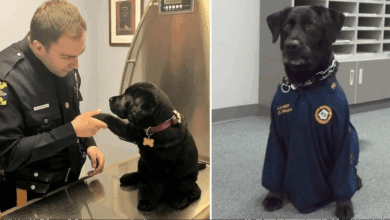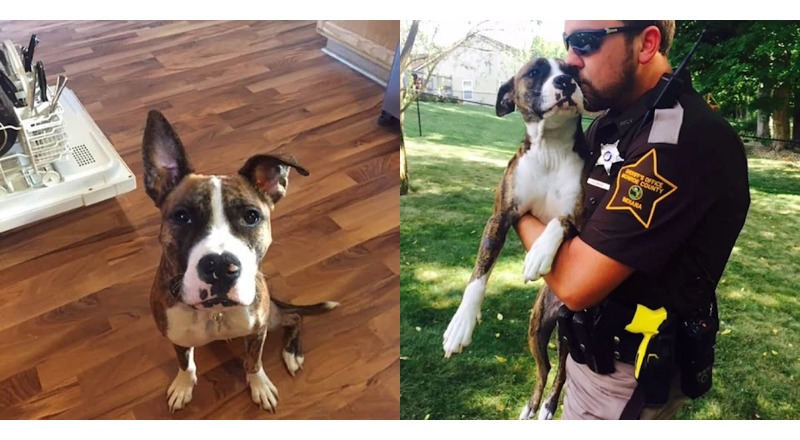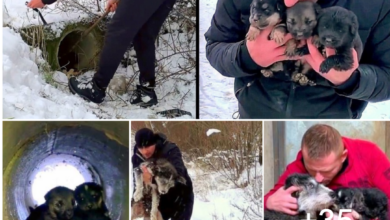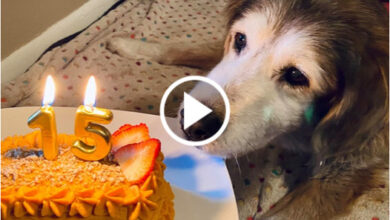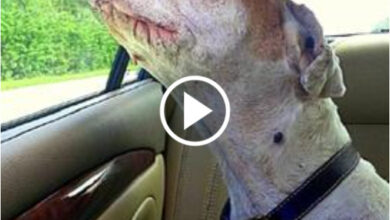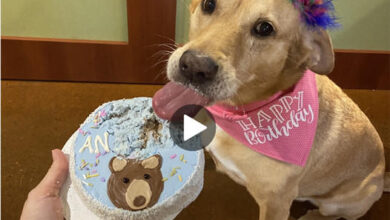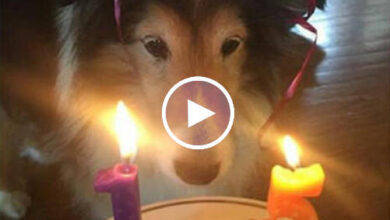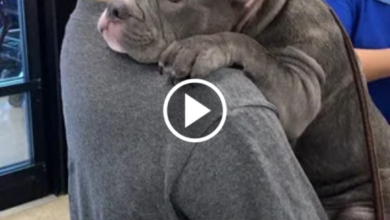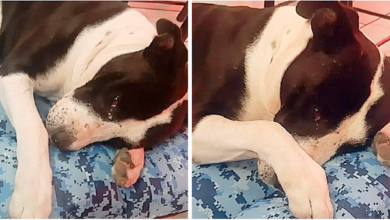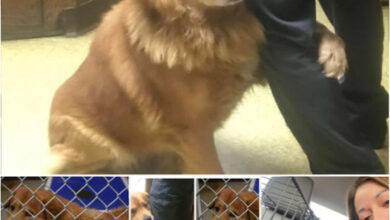Do Dogs Get Sad? How To Tell And What To Do

Did you know that dogs can experience a wide range of emotions, just like humans? While we often associate tail wagging and playful energy with our furry friends, they are also capable of feeling sadness.
In fact, studies have shown that up to 30% of dogs may suffer from some form of separation anxiety or depression.
As a responsible dog owner, it’s important to be able to recognize the signs of a sad dog and take action to provide comfort and support. This article will explore the various ways in which dogs express their emotions and how you can identify the root cause of their sadness.
We’ll also offer practical tips for providing your pup with the care they need to feel happy and healthy again.
Understanding Canine Emotions
Dogs may not be able to communicate their emotions through words, but they do have the ability to express themselves through body language and vocalizations. As a pet owner, it’s important to understand how your dog expresses its emotions and to recognize these signals.
Empathy training can help you become more aware of your furry friend’s emotional state. By paying attention to your dog’s behavior and understanding what it means, you can develop a closer bond with your pet and improve communication between you two. This type of training has been shown to have many benefits for both the owner and the dog, including increased emotional awareness, better behavior management, and a stronger relationship.
Learning about canine emotions through empathy training can also help you identify signs that your dog may be feeling sad or depressed. Some common signs include decreased appetite, lethargy, loss of interest in activities they usually enjoy, excessive sleeping, or hiding away from people or other dogs. By recognizing these signals early on, you can take steps to alleviate any potential sources of stress or discomfort for your furry friend.
Signs of a Sad Dog
You may notice subtle changes in your furry friend’s behavior that hint at a somber mood, like a lack of energy or enthusiasm during playtime. Dogs are social animals and thrive on attention and interaction. If your dog isn’t as lively as usual, it may be due to sadness or depression.
Other signs that suggest a dog is feeling blue include decreased appetite, sleeping more than usual, and avoiding contact with their owners. It’s essential to pay close attention to your dog’s behavior since changes in emotional well-being can have severe consequences if left unchecked.
A sad dog may become aggressive or destructive when left alone for extended periods. Additionally, prolonged sadness can lead to physical health issues such as weight loss or weakened immune system function.
Identifying the root cause of your pup’s unhappiness is crucial for restoring their joyous spirit. Some common reasons for canine melancholy include separation anxiety, boredom, illness, or trauma from an unfamiliar environment. Understanding what triggers your pet’s sadness will allow you to take appropriate steps towards addressing the issue and improving their overall quality of life without causing further harm.
Identifying the Root Cause
To identify the root cause of your dog’s sadness, you must consider three key factors: separation anxiety, illness or pain, and changes in routine or environment.
Separation anxiety is when your dog becomes anxious or distressed when left alone for extended periods.
Illness or pain can also cause your dog to act sad as they may not feel well.
Changes in routine or environment can be stressful for dogs, causing them to feel uneasy and out of sorts.
By considering these factors, you can better understand what may be causing your dog’s sadness and take steps to address it.
Separation Anxiety
Feeling anxious when left alone is a common problem for many pups, and it’s called separation anxiety. This condition can manifest as destructive behavior, excessive barking or whining, and even physical symptoms like vomiting or diarrhea. Separation anxiety can be caused by several factors such as lack of socialization, sudden change in routine, or past trauma.
To address separation anxiety in dogs, here are three coping mechanisms and training techniques you can try:
- Gradual Desensitization – Introduce brief periods of alone time to your dog gradually. Start with a few minutes and gradually increase the duration over weeks or months.
- Interactive Toys – Provide toys that keep your pup mentally stimulated while you’re away, such as puzzle feeders or chew toys.
- Positive Reinforcement Training – Reward calm behavior with treats and praise to reinforce positive associations with being alone.
If these methods don’t work or if your dog’s separation anxiety persists despite these efforts, it may be a sign of an underlying illness or pain that needs to be addressed by a veterinarian.
Illness or Pain
If your dog’s separation anxiety persists despite gradual desensitization, interactive toys, and positive reinforcement training, it may be a sign of an underlying illness or pain that needs to be addressed by a veterinarian. Dogs can’t communicate their physical discomfort in the same way humans do, so it’s important to monitor any changes in their behavior or routine.
For example, if your dog suddenly refuses to go up stairs or jump onto furniture they previously had no issue with, this may indicate joint pain or arthritis. Once you’ve determined that your dog is experiencing physical distress, seeking veterinary care is essential. Your vet can diagnose and treat any underlying conditions that may be causing the discomfort.
In addition to medical treatment, there are also ways to alleviate pain for dogs such as providing supportive bedding and modifying exercise routines. By addressing your dog’s physical health needs, you can help improve their overall well-being and potentially reduce symptoms of separation anxiety caused by underlying illness or pain.
As important as it is to address any possible illness or pain causing separation anxiety, sometimes changes in routine or environment can also affect a dog’s mood and behavior.
Changes in Routine or Environment
If your dog’s been showing signs of sadness lately, you may want to consider changes in their routine or environment as a possible cause.
Dogs are creatures of habit and thrive on consistency. So, when there is a sudden change in their daily routine or living environment, it can be overwhelming for them.
Some examples of changes that might impact your pup include moving to a new house, bringing home a new family member (human or animal), changing work schedules, or even rearranging furniture.
To ease the transition for your dog and create a stable environment, try to maintain as much of their routine as possible. Stick to their regular feeding and exercise schedule, provide familiar toys and bedding, and give them plenty of affection and attention during the adjustment period.
With patience and effort on your part, most dogs will eventually adapt to the changes and return to their happy selves.
As you continue exploring ways to help your furry friend overcome sadness caused by change in routine or environment, keep in mind that providing comfort and support is key.
Providing Comfort and Support
Offering a cozy blanket or snuggling up with your furry friend can help them feel comforted when they’re down. Dogs are social animals and crave affection, so spending quality time with them can make a big difference in their overall mood. Creating routines and training techniques that incorporate positive reinforcement can also help alleviate stress and anxiety in dogs.
In addition to physical touch, providing a safe and quiet space for your dog to retreat to is important. This could be a designated spot in your home, like a crate or bed, where they feel secure and comfortable. Avoid loud noises or sudden movements that may startle or upset your dog, as this will only add to their distress.
It’s important to remember that every dog is unique and may have different needs when it comes to comforting them during times of sadness. Pay attention to their body language and behavior cues, such as decreased appetite or excessive sleeping, as these may indicate signs of depression. By providing comfort and support tailored specifically to your furry friend’s needs, you can create an environment that promotes happiness and well-being.
Encouraging exercise and play is another great way to boost their mood while also promoting physical health.
Now that you’ve learned about the importance of offering comfort and support for your furry friend during times of sadness, let’s dive into how encouraging exercise and playtime can benefit both you and your pup!
Encouraging Exercise and Play
One great way to boost both yours and your furry friend’s mood is by encouraging exercise and playtime. Dogs are naturally active animals, and they need regular physical activity to stay happy and healthy.
By providing them with fun activities that they enjoy, you can motivate them to move around more and burn off excess energy. There are plenty of ways to motivate your dog to exercise and play. You can take them for a walk or run in the park, play fetch or tug-of-war with their favorite toys, or even set up an obstacle course in your backyard.
The key is to find activities that they enjoy so that they will be more likely to participate. By engaging in regular exercise and playtime with your dog, you can help improve their overall well-being while also strengthening the bond between the two of you.
However, if you notice that despite your efforts, your dog seems consistently lethargic or uninterested in any form of activity, it may be time to seek professional help from a veterinarian or animal behaviorist who can diagnose any underlying health issues or behavioral problems that may be affecting their mood.
Seeking Professional Help
When you notice that your furry friend is consistently lethargic or uninterested in any form of activity, it’s time to seek professional help from a veterinarian or animal behaviorist before it’s too late and the problem snowballs into something worse.
Don’t delay seeking help as dogs can become depressed just like humans. A professional will be able to assess if there are underlying medical conditions that may contribute to your dog’s sadness.
The benefits of therapy for dogs cannot be overstated. Therapy can aid in identifying and addressing any behavioral issues causing your dog distress, allowing for a happy and healthy life.
There are several types of therapy available such as cognitive-behavioral therapy, desensitization techniques, and phobia desensitization programs among others. Finding the right therapist is crucial for the success of treatment; research thoroughly before making an appointment.
Preventing future sadness in dogs requires consistent routines with plenty of opportunities for playtime, exercise, socialization with other pets and humans alike!
Daily walks, stimulating toys and puzzle feeders can keep their minds engaged while preventing boredom-induced sadness. Remember that dogs thrive on routine so try to maintain a regular schedule even when life gets busy!
Preventing Future Sadnessư
To keep your furry friend happy and healthy, it’s important to establish consistent routines with plenty of opportunities for playtime, exercise, and socialization. Positive reinforcement is an effective training technique that can help prevent future sadness in your dog. Rewarding good behavior with treats or praise can encourage your dog to continue behaving well and feeling happy.
Socialization techniques are also crucial in preventing future sadness in your dog. Exposing them to new environments, people, and other animals at a young age can help them develop confidence and avoid anxiety or fear later on. Socialization should be done gradually and in controlled settings to ensure a positive experience for your dog.
Additionally, keeping up with regular check-ups with a veterinarian can help identify any health issues that may contribute to feelings of sadness in your dog. Addressing these issues promptly can improve their overall well-being and prevent future sad episodes.
Remember that prevention is key when it comes to maintaining the happiness of our furry friends!
Conclusion
Now that you’ve got a better understanding of canine emotions and how to identify if your dog is feeling sad, it’s important to take action.
Providing comfort and support, encouraging exercise and play, and seeking professional help are all effective ways to address your furry friend’s sadness.
Remember, prevention is key. By providing your dog with a healthy diet, regular exercise, proper training, socialization opportunities, and plenty of love and attention, you can help prevent future bouts of sadness.
By being attentive to your dog’s emotional needs and taking the necessary steps to ensure their well-being, you can promote a happy and fulfilling life for both you and your four-legged companion.
Read more:





